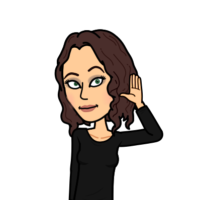
A teacher approached me last week and asked, “Can you please show me how to use quizizz in my classroom?”
I commended the teacher for her desire to implement a new technology tool for the benefit of her learners.
The teacher laughed and said, “Oh, it’s not me! The kids keep asking for it!”
The Willingness to Iterate
It is common to get stuck in a rut as an educator. Whether we are classroom teachers, instructional coaches, or administrators, we often fall back on what we have always done, what has seemed to work well in the past. While the familiar may be comfortable, it is the continual strive for innovation that leads to positive change. This is not to say that traditional practices are inherently negative, but that it is important to have a mindset of curiosity, of wondering if there may be an alternate method to better serve the learners in our midst. Innovation is a mindset, not an activity.
Want New Ideas? Empower Your Learners!
As an educator, the concept of continuously innovating may cause anxiety. Perhaps you understand the value of improvement, but struggle to locate and curate new methods of engaging the students or educators you serve. Remember, you need not have all the answers! Take comfort in recognizing that your learners are invaluable resources. When encouraged to own their learning, to supplement the way they access and create content, students may surprise you with resourcefulness.
The key to innovations is open-ended options that encourage creativity. This is where individuals have the opportunity shine and spread their knowledge with peers. My husband, edtech coach Adam Juarez, encouraged students to create videos to demonstrate their learning of historic events. One of his students found an AR (augmented reality) app of which he was not aware.
During my son’s freshman year of high school, an English teacher indicated that for a portion of the final assessment, they were to follow an academic rubric calling for textual evidence and numerous literary elements, but could demonstrate this learning any way they so chose. My son, who is in a digital pathway, created and edited a video using Adobe Premiere. I am fairly certain Dillon’s English teacher does not know how to use this video software. Other students created incredibly detailed posters complete with artistic sketches that I myself have not built the skills to create.

As an educator, be sure you are tough on content, but easy on delivery. Is it open-ended, creative assignments that grants students autonomy, increases relevance, and provides for natural differentiation. And this is based in neuroscience! As we provide learners with choice, we activate the affective networks of the brain as indicated in the UDL (universal design for learning) framework. And as students engage in the work, be sure to observe, listen, and learn.
Learn from Your Learners
One of my phrases to hear from educators or students with whom I am collaborating is, “Have you seen this?!” It is so exciting when those I serve feel empowered to teach me a new way to edit a PDF, discover a gamification tool I am not yet familiar with, or show me keyboard shortcuts to save me time. It is when we ditch our need to be the “expert” and allow our learners to shine that we ourselves build our own knowledge base. And even more impactful, it reminds us of the value in celebrating variability, in honoring the unique strengths of those we serve.
